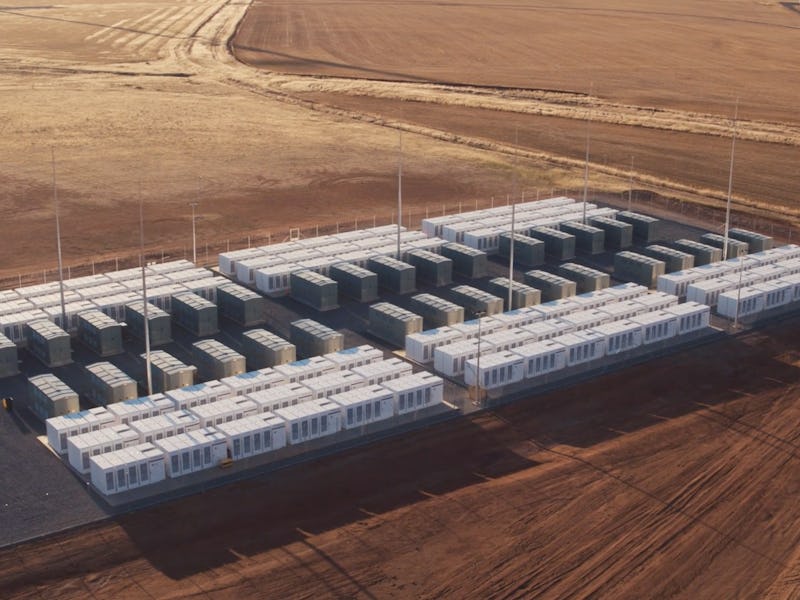Tesla’s Giant South Australia Battery Had an Incredible First Month
Elon Musk's project has come to life.

The results are in: Tesla’s South Australian project, touted as the world’s largest lithium-ion battery with enough energy to power 30,000 homes, had an astonishing first month of operation. The 100-megawatt behemoth, originally conceived by Elon Musk through a bet over Twitter, has inspired the states of Queensland and Victoria to follow suit with their own projects.
Writing for The Conversation, Dylan McConnell, a researcher at the University of Melbourne, claims that the Hornsdale battery generally moves between consuming and generating 30 megawatts, with a round-trip efficiency of 80 percent.
Over the month, it generated 2.42 gigawatt-hours of electricity and consumed 3.06 gigawatt-hours. This makes it an overall consumer of electricity, as would any other power storage method, but its unparalleled ability to plug gaps in service has helped keep the lights on.
“It still early days for the Hornsdale Power Reserve, but it’s clear that it has been busy performing essential services and doing so at impressive speeds,” McConnell writes. “Importantly, it has provided regular frequency control ancillary services -– not simply shifting electricity around.”
These frequency control ancillary services, used to maintain a dependable stream of eletcricity, have helped provide power when it’s needed most.
On December 14, the battery jumped into action when Victoria’s Loy Yant power plant failed. In the space of 140 milliseconds, the battery started providing 100 megawatts of power to plug the gap.
Watch the battery in action below:
It’s not just in emergencies where the battery has helped. The Australian Energy Market Operator puts out control signals every four seconds to maintain the supply and demand balance. The battery has been quick to meet these calls for extra power as soon as they arise.
The venture’s success has inspired others to get on board. Victoria signed a support agreement deal last week with Neoen, co-owner of the Hornsdale battery, to provide for a 20-megawatt battery near the town of Stawell that will pave the way for a 204-megawatt wind farm. Bloomberg reported earlier this week that Queensland might outdo them both, with a project that could power 57,000 homes when it becomes operational in 2019.
It’s easy to forget, but the whole project came from a bet in March 2017 between Musk and Australian software-billionaire Mike Cannon-Brookes. Musk claimed Tesla could get the system installed within 100 days from contract signature or it’s free. Musk ultimately won the bet 54 days after the Australian energy regulator gave clearance to the project. Through a one-off social media bet, Musk could end up transforming Australian energy for good.